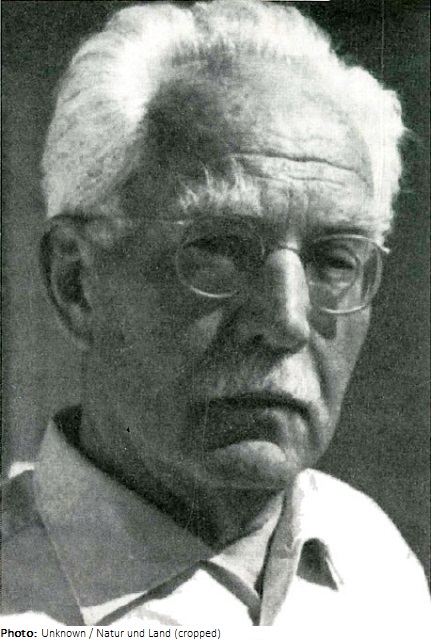Alwin Seifert

Biographical information
| Roles | Referee |
|---|---|
| Sex | Male |
| Full name | Alwin•Seifert |
| Used name | Alwin•Seifert |
| Born | 31 May 1890 in München (Munich), Bayern (GER) |
| Died | 27 February 1972 (aged 81 years 8 months 27 days) in Dießen am Ammersee, Bayern (GER) |
| NOC |  Germany Germany |
Biography
The garden architect Alwin Seifert studied architecture at the Technical University in München from 1909 and at the same time completed an apprenticeship as a mason. After his military service in World War I, he took over his father’s construction business, which, however, went bankrupt in 1920.
In 1920-23, Seifert taught as an assistant at the München Technical University and then worked as a freelance architect and garden designer. In 1924 he married the sister of the composer Carl Orff (1895-1982). At least from 1919-21, he was a member of the national-conservative German National People’s Party. His völkisch and anti-Semitic attitude made it easy for him to lean toward National Socialism, and he became a party member in 1937. From 1932, he held teaching posts at the university and was appointed professor in 1938. However, since he did not receive the promised full professorship, he left the university. After World War II, he taught there again and eventually became a full professor in 1954.
As a garden and landscape architect, Seifert was largely self-taught. He was influenced by the youth movement and anthroposophical ideas on agriculture of Rudolf Steiner (1861-1925). Seifert first built houses in rural areas and then turned increasingly to garden design. In 1929, he called for garden art that was described as down-to-earth.
After the Nazis seized power, he was appointed as an advisor on landscape issues for the expansion of the autobahns by the Inspector General for German Roads, Fritz Todt (1891-1942). But Seifert also conceived a “Germanization” of the “eastern territories” through appropriate planting, landscaped military installations for camouflage, and designed gardens for Nazi celebrities. He was probably also involved in the creation of the so-called herb garden for the Dachau concentration camp, which was laid out and cultivated on moorland by at times over 1500 prisoners. In 1944, Seifert was included in the “God-gifted list” of leading artists of the Third Reich.
After World War II, Seifert campaigned for nature conservation and pesticide-free gardens. Today he is considered one of the most important representatives of the early ecology movement and biodynamic agriculture. He received numerous honors before and after the war: Honorary member of the Bavarian Homeland Association (1939), German Federal Cross of Merit (1961), honorary member of the Association of German Garden and Landscape Architects (1963), and Bavarian Order of Merit (1966).
Referee
| Games | Sport (Discipline) / Event | NOC / Team | Phase | Unit | Role | As | |
|---|---|---|---|---|---|---|---|
| 1936 Summer Olympics | Art Competitions |  GER GER |
Alwin Seifert | ||||
| Architecture, Designs For Town Planning, Open (Olympic) | Final Standings | Judge | |||||
| Architecture, Architectural Designs, Open (Olympic) | Final Standings | Judge |